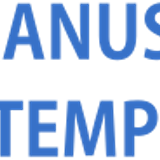Environmental Impacts Of The Oil And Gas Platform Decommissioning
Abstract
Many of the oil and gas installations in the Indonesian Sea are reaching the end of their economic production life. Typically, oil and gas fields have an economic life of 20 to 40 years and a decommissioning program will be required and predicted to peak during the period 2010-2020. Some of them are located in shallow water such as those around Pulau Seribu, Java Sea, and South China Sea; some others are in deeper water such those at Makasar Straits and Moluccas Sea. Many different opinions exist on the benefits and problems of a partial platform removal or a complete removal. For some reasons platforms would be a good fishing spot. On the other hands, an unseen hazard could be left behind by the platforms. Even a complete removal of the platforms is conducted but without proper clearing of the ocean floor, the unused platforms still can cause hazards. For the management of the seas outside the territorial waters, worldwide nations have historically entered into international agreements and conventions. These agreements and conventions that have been entered into under the umbrella of the United Nations are Geneva Convention, the United Nations Convention on the Law of the Sea (UNCLOS) and the International Maritime Organization (IMO) Guidelines. Nationally, there is little information concerning with the decommissioning project. This paper is intended to highlight options for decommissioning of offshore platforms, its environmental impacts, and regulations that could be referred to following the decommissioning proposal. The technological aspects of the structural decommissioning of platforms are beyond the scope of this paper.
Keywords
Full Text:
PDFReferences
1Ahlfeld, Thomas, 2004, Environmental Studies Program Direction: Platform Decommissioning and Removal, Mineral Management Service Environmental Program, US Department of Interior.
3Anonymous, 1996, Technical Review of the Possible Methods of Decommissioning and Disposing of Offshore Oil and Gas Installations, The European Commission DG XI and DG XVII, Contract No. B4- 3040/96/000259/MAR/D1.
6Anonymous, 1996, Technical Review of the Pos¬sible Methods of Decommissioning and Disposing of Offshore Oil and Gas Installations, The European Commission DG XI and DG XVII, Contract No. B4- 3040/96/000259/MAR/D1
7Abdullah, M., and Paramitha, D., 2012, Post Mining Responsibility for Oil and Gas Extractive Industry (Tanggung Jawab Pasca Tambang pada Industry Ekstraktif Migas), Transparansi Cepu, Charity Org, http://transparansicepu.pattiro.org/?p=704
8Anonymous, 2011, Ministerial Decree of Energy and Mineral Resources No 01/2011, describing The Technical Guidance for Dismantling of Oil and Gas Offshore Installation, Signed by Darwin Zahedy Saleh, the Minister of Energy and Mineral Resources, at Jakarta, dated 7 January 2011.
9Anonymous, 1999, Government Regulation, PP.19/1999, describing Sea Pollution And/Or Destruction Control, Signed by Bacharuddin Jusuf Habibie , the President of The Republic of Indonesia, at Jakarta, dated 27 February 1999.
5Grant, Alastair, 2002, Environmental Impacts of the Decommissioning of Oil and Gas Installations in the North Sea, University of East Anglia, Norwich, NR4 7TJ, UK.
10Mulyana W. and M.Salahuddin, 2009, Morphology of Indonesia Sea Bed (Ind), Puslitbang Geologi Kelautan.
4Patin, S.,1999, Decommissioning, abandonment and removal off obsolete offshore installations, based on “Environmental Impact of the Offshore Oil and Gas Industry”, EcoMonitor Publishing, PO Box 866, East Northport, NY, 11731, USA, Elena Pavlova mailto:webmaster@offshore-environment.com.
11Picken, G., 2004, Environmental Impacts of Decommissioning, BMT Cordah Limited, UK and PPPTMGB “LEMIGAS” Joint Seminar Programme, Supported by UK Trade & Investment Jakarta, Jakarta.
2Twachtman, Ron, 1997, Offshore-platform decommissioning perceptions change, Oil & Gas Journal, Published by Pennwell.
DOI: https://doi.org/10.29017/SCOG.36.2.766

This work is licensed under a Creative Commons Attribution-NonCommercial-NoDerivatives 4.0 International License.






